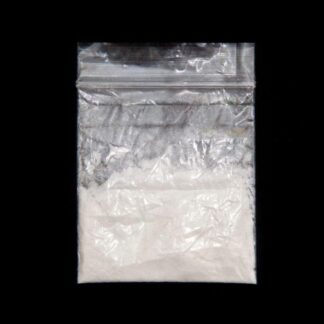Description
Benzodiazepines are a class of psychoactive drugs that are commonly prescribed for their sedative, hypnotic, anxiolytic, anticonvulsant, and muscle relaxant properties. They are widely used in the medical field to treat various conditions such as anxiety disorders, insomnia, seizures, and alcohol withdrawal symptoms. This comprehensive response will delve into the history, mechanism of action, therapeutic uses, side effects, and potential risks associated with benzodiazepines.
History:
The development of benzodiazepines can be traced back to the mid-20th century when researchers were exploring new compounds with sedative properties. In 1955, Leo Sternbach, a chemist working for Hoffmann-La Roche, synthesized chlordiazepoxide, the first benzodiazepine compound. It was later marketed under the brand name Librium and became the first commercially available benzodiazepine in 1960. This breakthrough led to further research and the subsequent discovery of other benzodiazepines such as diazepam (Valium) and alprazolam (Xanax).
Mechanism of Action:
Benzodiazepines exert their effects by enhancing the activity of gamma-aminobutyric acid (GABA), which is an inhibitory neurotransmitter in the central nervous system (CNS). GABA binds to specific receptors called GABA-A receptors, which are composed of multiple subunits. Benzodiazepines bind to a specific site on these receptors known as the benzodiazepine binding site or allosteric modulatory site. This binding enhances the affinity of GABA for its receptor and increases chloride ion influx into neurons. The net effect is an overall increase in inhibitory neurotransmission, leading to sedation, relaxation, and anxiolytic effects.
Therapeutic Uses:
Benzodiazepines have a wide range of therapeutic uses due to their sedative, anxiolytic, and muscle relaxant properties. They are commonly prescribed for the short-term management of anxiety disorders, including generalized anxiety disorder (GAD), panic disorder, and social anxiety disorder. Benzodiazepines are also effective in treating insomnia by promoting sleep initiation and reducing awakenings during the night. Additionally, they are used as anticonvulsants to control seizures in conditions such as epilepsy. In some cases, benzodiazepines may be administered prior to surgical procedures to induce sedation and reduce anxiety.
Side Effects:
While benzodiazepines can be highly effective in managing various conditions, they are not without side effects. Common side effects include drowsiness, dizziness, impaired coordination, and cognitive impairment. These effects can be more pronounced in elderly individuals or those with liver or kidney dysfunction. Long-term use of benzodiazepines can lead to tolerance, dependence, and withdrawal symptoms upon discontinuation. Other potential side effects include confusion, memory problems, depression, and paradoxical reactions such as increased agitation or aggression. benzodiazepine side effects,examples of benzodiazepine,long-acting benzodiazepine, benzodiazepine addiction
Risks and Precautions:
Benzodiazepines carry certain risks and precautions that need to be considered before prescribing or using them. Due to their sedative effects, they can impair cognitive and motor functions, making activities such as driving or operating machinery dangerous. Benzodiazepines should be used with caution in individuals with a history of substance abuse or addiction as they have the potential for misuse. Combining benzodiazepines with other central nervous system depressants like alcohol or opioids can increase the risk of respiratory depression and overdose.
How to Properly Store
are a class of psychoactive drugs commonly prescribed for the treatment of anxiety, insomnia, seizures, and muscle spasms. These medications are known for their sedative and calming effects, and they can be highly effective when used as directed by a healthcare professional. To ensure the potency and safety of , it is crucial to store them properly. In this comprehensive guide, we will discuss the best practices for storing to maintain their efficacy and prevent any potential harm.
1. Temperature Control:
One of the most important factors in storing is temperature control. These medications should be kept at room temperature, typically defined as between 68°F (20°C) and 77°F (25°C). Extreme temperatures can degrade the active ingredients in benzodiazepines and reduce their effectiveness. Therefore, it is essential to avoid exposing them to excessive heat or cold.
It is recommended to store away from direct sunlight and sources of heat such as radiators, stoves, or heaters. Additionally, they should not be stored in places that are prone to extreme temperature fluctuations, such as bathrooms or near windows. Instead, a cool and dry place like a medicine cabinet or a drawer away from moisture is ideal for storing these medications.
2. Moisture Protection:
Moisture can also have a detrimental effect on the stability of . Exposure to high humidity or direct contact with water can cause degradation and reduce the potency of these medications. To protect against moisture damage, it is crucial to keep in their original packaging or in airtight containers.
If the original packaging becomes damaged or compromised, transferring the medication to a new container with a tight-fitting lid can help maintain its integrity. Silica gel packets, which are often included in medication packaging, can also be used to absorb excess moisture and preserve the quality of . However, it is important to keep these packets away from children and pets as they can pose a choking hazard.
3. Light Exposure:
Exposure to light, especially sunlight or fluorescent light, can accelerate the degradation of . To minimize light exposure, it is recommended to store these medications in opaque containers or in their original packaging, which is designed to protect them from light.
If you need to transfer to a different container, choose one that is dark-colored and opaque. Avoid using transparent or translucent containers as they allow light to penetrate and potentially degrade the medication. Additionally, it is advisable to keep the containers in a dark place such as a medicine cabinet or drawer.
4. Childproofing:
should always be stored out of reach and sight of children. These medications can be dangerous if ingested by young children, leading to serious health risks or even fatalities. It is crucial to use child-resistant containers and secure them in a location that is inaccessible to children.
If you have children in your household, consider using additional safety measures such as cabinet locks or storing medications in a locked box or drawer. It is also important to educate family members about the potential dangers of benzodiazepine ingestion and emphasize the importance of proper storage.
5. Proper Labeling:
Accurate labeling is essential for proper storage and identification of benzodiazepines. Ensure that each container is clearly labeled with the name of the medication, dosage instructions, expiration date, and any other relevant information provided by the pharmacist or healthcare professional.
Proper labeling helps prevent confusion and ensures that you are using the correct medication at the appropriate time. It also allows you to track the expiration dates and discard any expired safely.
6. Disposal of Expired Medications:
have an expiration date beyond which their effectiveness and safety cannot be guaranteed. It is important to regularly check the expiration dates on your medications and dispose of any expired or unused properly.
To dispose of , follow the guidelines provided by your local pharmacy or healthcare provider. Many communities have medication take-back programs or designated drop-off locations where you can safely dispose of unused or expired medications. Flushing medications down the toilet or throwing them in the trash can be harmful to the environment and should be avoided.
Conclusion:
Proper storage of is crucial to maintain their potency and ensure their safety. By following these guidelines, including temperature control, moisture protection, light exposure prevention, childproofing, proper labeling, and appropriate disposal of expired medications, you can help preserve the efficacy and integrity of these important medications.
What drugs are classified as benzodiazepines?
Are benzodiazepines still used for anxiety?
Are benzodiazepines different from Xanax?
What are the 3 types of benzos?








Reviews
There are no reviews yet.